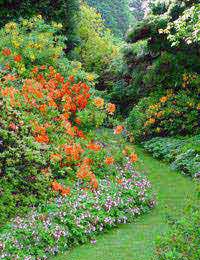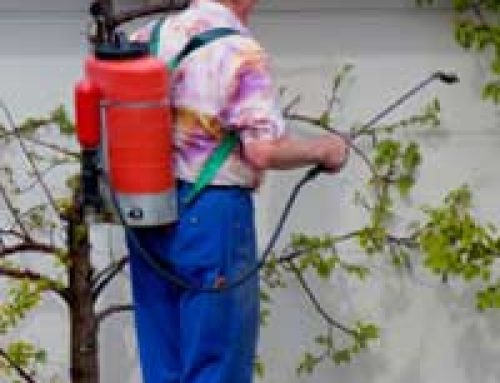 There are quite a number of poisonous plants and shrubs to be found throughout the UK and to list them all would take several pages. You should be able to get advice from the Royal Horticultural Society if you wanted to find out where you might be able to obtain a comprehensive list and there are plenty of useful resources on the internet.
There are quite a number of poisonous plants and shrubs to be found throughout the UK and to list them all would take several pages. You should be able to get advice from the Royal Horticultural Society if you wanted to find out where you might be able to obtain a comprehensive list and there are plenty of useful resources on the internet.
In general, however, if you are not an expert, most good plant stores will have toxic plants clearly stated on the bed label and they will be categorised according to the hazards they present.
The various kinds of toxic hazards are as follows:
Toxic if Eaten
These plants are poisonous and can even cause illness if eaten in very small quantities. Often the whole plant will be poisonous, although it may just be the berries or seeds which are harmful. Children are most at risk from accidental poisoning, especially toddlers who can become fascinated by colourful petals and berries. However, adults can be just as susceptible; for example, many adults have been poisoned by daffodil bulbs which are often mistaken for onions. Great care should also be taken with houseplants. Some of these indoor plants are poisonous too and you shouldn’t keep any of them indoors if you have extremely young children. If you suspect you or someone else has eaten seeds or berries of one of these types of plants, you should seek immediate medical attention.
Harmful if Eaten
These plants contain poison but contain less of a risk. If part of such a plant is eaten, however, you should still seek medical advice.
Skin Irritant
These kinds of plants may cause skin reactions when you’re handling them. Symptoms can be similar to a dermatitis-like rash, inflammation, itching and blistering. Often this doesn’t last very long – the ‘hyacinth itch’ being a good example of a minor irritation but in some cases, reactions can be severe. Common garden flowers like tulips and daffodils can also cause skin irritation which is usually associated with the extensive handling of cut flowers. If you suffer a severe skin reaction to a plant or flower, you should visit your GP or local casualty department, if it’s really bad.
Eye Irritant
Sap is most often the cause of eye irritation which can occur if it splashes into your eyes or you rub your eyes with your fingers if they have sap on them.
May Cause Skin Allergy
Skin allergies do not affect all of us but repeated exposure to and handling of a plant may cause an allergic reaction to occur. If the allergy is found to be present in several plant groups, then the person suffering will also be allergic to all the plants in those particular groups. An example of this is with sticking plasters. It’s not uncommon to find that people who are allergic to sticking plasters are also allergic to conifer trees as it’s the pine resin used in the manufacture of the adhesive used in plasters that creates the allergy. Chrysanthemums are also another common garden flower known to cause skin allergies.
Severely Toxic to Skin With Sunlight
A small number of plants contain sap which makes the skin extremely sensitive to sunlight. If you expose yourself to sunlight shortly after handling one of these plants, it can result in severe localised sunburn with blistering and may even cause long-term skin discolouration.
Harmful via Skin
The toxins in these kinds of plants do not cause direct skin problems but can harm organs such as the heart where the toxins can cause disorders having entered the body initially through the skin.
Precautions and Advice
If you have to seek medical help because of suspected poisoning or severe skin reaction, try to identify the plant that caused it and take the label with you if you have it. If you don’t and you can’t remember its name, take an identifiable cutting of the plant along with you. Contrary to popular belief, if you think you’ve ingested part of a poisonous plant, you should try not to vomit if you can help it.
Sounds logical but if you buy a plant marked ‘skin irritant’ or may cause ‘skin allergy’, you should always wear gloves when handling these kinds of plants.
Keeping Children Safe
Children should be taught not to eat any berries, seeds or any other parts of ornamental plants. In fact, you should try to instil in them that they should always come to you first before eating anything that’s growing in the garden, even if that’s something as innocent as an apple. You can reduce the risk of harm to your children by planting potentially harmful plants well back from the edge of borders and keep fruit and vegetable plants segregated from ornamental plants.
Finally, you should always ensure that very young children are always supervised when playing out in the garden.





Leave A Comment